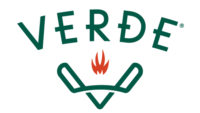‘Cue and Art
By Barbara Young
Editor-In-Chief
Among America’s list of indigenous cuisine, nothing is more homegrown than barbecue. TX-based Sadler’s Bar-B-Que Sales offers a line of products prepared with artistry.
Barbecue means more than an outdoor social gathering on a lazy summer day to folks at Sadler’s Bar-B-Que Sales in Henderson, TX. To be sure, Texas is barbecue country where soirées include feasting on roasted meat cooked outdoors on all kinds of equipment — from the primitive to the sophisticated. Barbecue is a year-round treat thanks to commercial production using modern equipment and cooking techniques, coupled with innovative marketing and distribution strategies.
Make no mistake, barbecue is not simply the exercise of turning raw meat into culinary treats — barbecue is about obsession, ritual, tradition, and recipe secrets.
Nowhere is this American dish more steeped in tradition than in Texas, the birthplace of Sadler’s — a four-generation family enterprise positioned as a leader in the production of “authentic” barbecue. Sadler’s line of products, featuring its TenderSplit beef brisket, spend 16-to-18 hours in the company’s custom-designed barbecue pits fueled by locally procured hickory wood.
“Barbecue is our business, and nobody does it better,” boasts Randy Sadler, grandson of the Texan who sired the family’s barbecue tradition. “Making barbecue is the only way our family has made a living in four generations.”
The original business operated in a 50-square-foot drive-up barbecue restaurant with curb service. The family built a USDA facility to handle increasing wholesale demand in 1967.
The company operates under the management of Harold Sadler, president, and his wife, Mildred. Other company officers include Harold’s sons Rick and Randy and son-in-law Jason Flanagan. Rick Sadler’s two sons also work full-time in the business.
“Our people and our process are our assets,” Randy Sadler says. “Members of the same family come to work here. That would not happen if we didn’t treat people right.”
Henderson, TX — population 11,000 — is the county seat. As the second-largest employer in the city, Sadler’s management embraces the responsibilities of good corporate citizenship. Therefore, when a company supervisor recommended that the company make insurance coverage an optional benefit, Harold Sadler vetoed the proposal.
“He didn’t want our employees to burden the community hospital system, so coverage is automatically provided by the company,” Randy Sadler explains. A bonus program rewards employees based on their years of service. The company also provides anon-site chapel for worship and a full-time chaplain.
Revving up for growth
Sadler’s achieved double-digit growth for the past decade, and is projecting a 16-percent growth rate in 2005, driven primarily by its meal-solution product line targeting the retail and club store markets. Other growth vehicles include convenient labor-saving products for deli, traditional foodservice, and business-to-business channels.
“While the traditional barbeque product that defines Sadler’s remains consistent, organization, packaging, marketing, and equipment changes reflect the evolution and growth of the company and category,” James Chambless, executive director, business development, reports.
Besides its trademark beef brisket, including a signature sliced TenderSplit version, Sadler’s offers products in heat-and-serve tubs and convenience cartons.
Brisket leads meat-case sales at retail, Randy Sadler notes. With a recent agreement to supply the largest retail chain in the Southeast, Sadler’s is growing the boundaries of distribution for “true” barbecue, and simultaneously strengthening the Sadler’s Smokehouse brand nationally, he adds.
Newly designed packaging showcases four heat-and-serve barbecue products including chopped beef, chopped pork, shredded chicken, and Sadler’s Texas-style chili made from lean beef and a special spice blend.
“Heat and serve is our growth category,” Sadler reports. “Consumers don’t have time to cook long hours. Our products offer quality, consistency, and flavor. We do the cooking for consumers.”
To that end, additional space is under construction for fully cooked product packaging plus a new pre-packaging area.
Culinary artistry of barbecue
A 40-acre business site houses the company’s headquarters and more than 200,000-square-foot processing plant.
Meat processing begins with hand-trimmed beef brisket seasoned with a custom spice blend, slow smoked, hand packed, vacuum-sealed, and quick chilled to assure just-cooked freshness. To be sure, the key to success lies with the cooking process under the guidance of Ramon Gonzales, a 25-year company veteran.
Sadler says Gonzales, dubbed the “smokemaster,” must be pressured to take a vacation. “His job is critical because maintaining the correct temperature is essential. Even so, running the custom-designed barbeque pits is more art than science.”
Once the meat is cooked just right, the cooling process must follow within four hours.
Although sauce is considered a barbecue essential, Sadler maintains that it is unnecessary for the enjoyment of “true” barbecue.
“There is no substitute for the natural flavor of true Texas barbecue,” he says. However, barbecue sauce is part of Sadler’s product presentation. The company’s version begins with twice-baked tomato paste and the recipe is completed without artificial ingredients and binding agents.
Authentic vs. pretend barbecue
To barbecue means to slow-cook meat at a low temperature. True barbecue is not merely cooked meat treated with natural or artificial smoke flavoring.
“We pit-smoke our meats using natural hardwood coals and smoke with no direct heat,” boasts Sadler. “Our slow cooking technique is superior.”
Sadler adds that the meat must shrink no less that 30 percent to qualify as “true” barbecue. “This sets up apart from others in the barbecue category,” he concludes
Grilling may define barbecue for some folks, but aficionados know better. Grilling is a hot and fast cooking process. Authentic barbecue involves a slow process, sometimes taking more than 18 hours to complete.
Texas-style beef brisket, for example, is made from one of the toughest cuts of meat, requiring hours of cooking for tenderness.
“Few companies sell brisket because it must be left on the pit to achieve the flavor and tenderness we deliver,” Sadler notes. “If brisket is not cooked on the pit, it is a roasted product. That is pretend barbecue.”
The word barbecue is thought to originate either from the Taino Indian word barbacoa translated to mean meat-smoking apparatus or barbe a queue, a French word for whiskers-to-tail.
Taino Indians were Central American natives who migrated from the Caribbean islands of the Greater Antilles and the Bahamas, becoming extinct in the 16th century.
Whatever the origin, founder Red Sadler’s introduction of his brand of barbecue to East Texas enabled his heirs to expand the tradition by making their own marks on the business that now stands as a major contender in the category. NP

